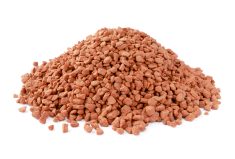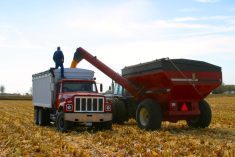“… where it makes sense to remove the ejector and put in the proper sewage disposal system, we’re all for that. But don’t paint the whole province with the same brush.”
– DOUG DOBROWOLSKI, AMM PRESIDENT
New rules governing human sewage disposal in Manitoba will produce costly headaches for rural property owners, say Association of Manitoba Municipalities (AMM) officials who lost their battle against a province-wide ban on sewage ejectors last week.
The province on Sept. 29 announced amendments to its Onsite Wastewater Management Regulation, which ban the installation of new sewage injectors and construction of septic fields in environmentally sensitive areas.
Read Also

Mazergroup’s Bob Mazer dies
Mazergroup’s Bob Mazer, who helped grow his family’s company into a string of farm equipment dealerships and the main dealer for New Holland machinery in Saskatchewan and Manitoba, died July 6 from cancer.
Sewage ejectors are to be eliminated over time, with the requirement that rural homeowners replace them with septic fields when selling their properties.
Conservation Minister Stan Struthers said the new rules will help protect human health and the environment, and help address problems caused by poor planning in previous decades, he added.
“Manitobans recognize it’s time to move beyond outdated and unsustainable ways of dealing with sewage in favour of more responsible methods,” Struthers said.
What municipal leaders oppose is a province-wide ban on the ejectors, said AMM president Doug Dobrowolski, who calls the move “heavy handed.”
Municipalities agree ejectors should be eliminated wherever they’re causing problems, he said, and they’ve been saying so since consultations on the subject began. But there should not be an outright ban, he said.
“We’ve always said right from the start, where it makes sense to remove the ejector and put in the proper sewage disposal system, we’re all for that,” he said. “But don’t paint the whole province with the same brush.”
Municipalities are also asking why provincial authorities now insist sewage ejectors pose a health risk.
“We haven’t heard any rationale, based on science, why they’re all of a sudden a problem,” said Dobrowolski.
AMM is taking resolutions to its November convention to ask for this part of the regulation on a case-by-case basis “where there are scientifically justified environmental concerns and identified high-risk areas,” he added.
OWNERS MUST PAY
AMM rural vice-president Roger Wilson of Birtle predicts an outcry from the public. Rural property owners won’t be impressed to find out they now must pay to convert their injectors to field systems if they sell their properties, he said.
“Rural properties are now worth $20,000 less because of regulations required… and we haven’t seen the rationale to justify it,” Wilson said.
Existing sewage ejectors can remain in operation until the property transfers.
Al Beck, Ma n i t o b a Conservation’s director of environmental services, said the province’s primary concern with sewage ejectors is that they deposit essentially raw sewage directly onto the surface of the ground.
“There is a risk to human health because it’s not disinfected,” Beck said, adding that pets, wildlife or, in some areas, run-off can spread pathogens contained in the sewage.
The province has not done studies to determine that disease or illness outbreaks have, in fact, resulted from sewage ejector operations, Beck noted.
“Have we done a specific study? No. But this is raw sewage. It’s not grey water. It’s black water. We know that poses a risk when it’s in the environment and not disinfected.”
The new regulations also prohibit
use of septic fields in new systems in environmentally sensitive areas, along portions of the Red River corridor, in Crown land cottage developments and provincial parks.
Two-acre minimum lot sizes will also be required for installing disposal fields. In the past, there has been no minimum lot size requirement. Homeowners must also hook up to municipal collection systems in serviced areas. The rules also call for municipal waste water management planning.
The new regulations build on other provincial actions aimed at protecting waterways and Lake Winnipeg such as restrictions on phosphates in detergent and lawn fertilizers, wetland restoration and the province’s regional hog moratorium, a provincial news release said.



















